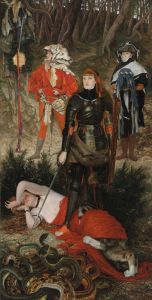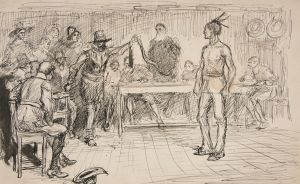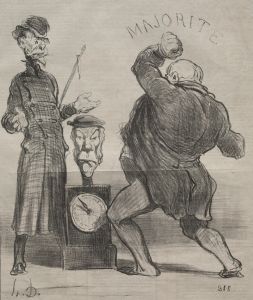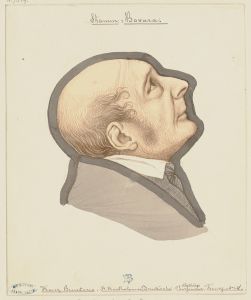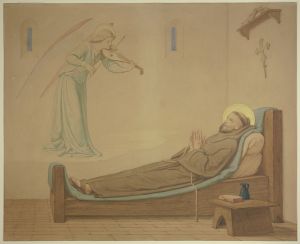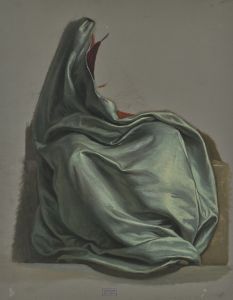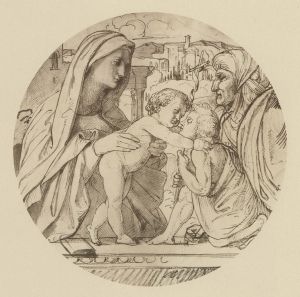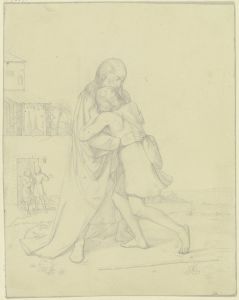
Viele laufen nach dem Ziele, wenige erreichen es
A hand-painted replica of Eduard von Steinle’s masterpiece Viele laufen nach dem Ziele, wenige erreichen es, meticulously crafted by professional artists to capture the true essence of the original. Each piece is created with museum-quality canvas and rare mineral pigments, carefully painted by experienced artists with delicate brushstrokes and rich, layered colors to perfectly recreate the texture of the original artwork. Unlike machine-printed reproductions, this hand-painted version brings the painting to life, infused with the artist’s emotions and skill in every stroke. Whether for personal collection or home decoration, it instantly elevates the artistic atmosphere of any space.
Eduard von Steinle was a notable 19th-century Austrian painter, recognized for his contributions to the Nazarene movement, which sought to revive honesty and spirituality in Christian art. One of his works, "Viele laufen nach dem Ziele, wenige erreichen es," which translates to "Many strive for the goal, few achieve it," is emblematic of his thematic focus on moral and spiritual subjects.
The painting's title suggests a philosophical or moral theme, reflecting the idea that while many people pursue certain goals or ideals, only a few succeed in reaching them. This concept aligns with the Nazarene movement's emphasis on spiritual and moral integrity. The Nazarenes, including Steinle, often drew inspiration from religious and historical subjects, aiming to convey deeper moral messages through their art.
Steinle's style is characterized by meticulous attention to detail and a clear narrative quality, often incorporating elements of Romanticism. His works frequently feature rich symbolism and are imbued with a sense of devotion and earnestness. Although specific details about the composition and visual elements of "Viele laufen nach dem Ziele, wenige erreichen es" are not widely documented, it can be inferred that the painting likely embodies these stylistic traits.
Steinle was part of a broader artistic context that included other members of the Nazarene movement, such as Johann Friedrich Overbeck and Franz Pforr. This group was known for their rejection of the prevailing academic art styles of the time, instead looking back to the art of the Middle Ages and the early Renaissance for inspiration. They sought to infuse their works with a sense of piety and sincerity, often focusing on biblical and allegorical themes.
The artist's broader body of work includes frescoes, religious paintings, and illustrations, many of which are housed in churches and public buildings across Europe. Steinle's influence extended beyond his own creations, as he was also a respected teacher, shaping the next generation of artists with his ideals and techniques.
While detailed information about "Viele laufen nach dem Ziele, wenige erreichen es" is limited, Eduard von Steinle's legacy as a painter is well-documented. His contributions to the Nazarene movement and his dedication to creating art with a moral and spiritual dimension have cemented his place in art history. His works continue to be studied for their artistic merit and their embodiment of the values of the Nazarene movement.
In summary, Eduard von Steinle's "Viele laufen nach dem Ziele, wenige erreichen es" reflects the artist's commitment to themes of moral and spiritual pursuit, characteristic of the Nazarene movement. Although specific details about the painting are scarce, Steinle's broader artistic philosophy and style provide context for understanding the work's potential significance.





